

It’s here! The Mother of All Piers. The MOAP.
Next level engineering brings you the stiffest, most stable permanent observatory custom telescope piers available. It’s all about deflection and MOAPs have 3x to 20x less deflection than other telescope piers on the market. Much more rigidity and greatly reduced movement mean superior performance, higher capacity, and dependable handling of critical tasks while still competitively priced.
Completely customized to your specific mounts and desired pier height. MOAPs can be prepped for existing anchor bolts if you already have a foundation. Alternate configurations, such as equatorial piers, are also available.
All piers include FEA results.
Directly attach your telescope mount or adapter to the Mount Plate pre-drilled and tapped for your equipment.
Future proof telescope pier for heavier payloads and smaller pixel scales. Easily move the MOAP telescope pier when you move. Using multiple mounts on a single MOAP is a simple, quick change out.
Take the guesswork out of pier installation with CNC anchor bolt templates and Base Plate slots with 10 degree adjustability for precision PA. Fast, easy pier leveling at the base while keeping the pier off the concrete eliminates the need for undesirable flexing top plate leveling. ($4m wind turbines do it the same way.)
Superior cable management inside the MOAP telescope pier. Standard room for two 1-1/2″ plus two 3/4″ conduits.
MOAP 43 Series telescope pier heights are typically up to 43″ with deflections of less than 0.385 arcsec. (36″ & 43″ heights are normally stocked)
MOAP 64 Series telescope pier heights are typically from 44″ to 64″ with deflections of less than 0.398 arcsec.
All MOAP telescope piers feature:
- Powder coated steel pier body and Mount Plate. Pre-drilled for your specific mount or adapter. Pipe: ASTM A500 Grade B, 46,000 psi yield, 58,000 psi tensile. Plate: ASTM A36, 36,000 psi yield, 58,000 psi tensile.
- Stainless steel Mount Plate fasteners: ASTM F879 alloy group 1, condition CW, 65,000 psi yield, 125,000 psi tensile. ASTM A380/A380M finish. 4,940# clamp load.
- Anchor Kits take the problems out of installation. CNC template and eight 5/8″ hot-dipped galvanized anchor bolts: ASTM A36/A36M & ASTM F1554 Grade 36, A563 grade A, ASTM A153. 36,000 psi yield, 58,000 psi tensile. 14,400# clamp load.
- Step-by-step installation guide (how to easily nail pier alignment, cast the anchor bolts, level the pier, properly torque bolts, etc.)
- Concrete Foundation Design and Installation Guide: How to get the most of what you put in the ground.
- Customer support on your schedule. We are here to make sure everything goes smoothly.
- Lifetime structural warranty.
☛ HOW STIFF DOES A PIER NEED TO BE?
Astro photography places rigid demands on a permanent telescope pier and we want light hitting any pixel to stay on that pixel and not move around as the equipment deflects. Acceptable deflection is then a matter of pixel size and focal length. A 4.78µ pixel at 500mm is 1.97 acrsec per pixel while the same camera at 2000mm is only 0.49 arcsec per pixel. When we go planetary with 3.8µ pixels at 5600mm, we are down to 0.13 arcsec. Less deflection is always better and becomes more critical as focal length increases and as pixel size decreases. MOAP 43 Series telescope pier deflection at 43" height is 0.383 acrsec: 3x to 20x less than other piers. Shorter heights are even less. A MOAP 43 Series telescope pier at 35" height is only 0.272 arcsec.
☛ HOW DO WE DESIGN MOAPs?
Sizing a length of pipe is straightforward but only accounts for just a bit over half the deflection of a total telescope pier assembly. We use bending moment diagrams to identify where the bending is taking place and then use an iterative 30,000 node 3D finite element structural analysis method to converge on designs that minimize deflection of the entire pier assembly: the same software NASA and Northrop Grumman used to design the James Webb Space Telescope. To achieve these low deflections, optimization of every element is critical and requires unique attention to detail.
☛ HOW DO WE FABRICATE MOAPs?
Telescope pier components are cut by a 5-axis CNC water jet providing quality 5 (best) edges. Pipes are chucked in a lathe and ends are faced and beveled for welding. TIG welding is done on rotary tables. Fabricated piers are put in a lathe and the top plate is faced to remove any thermal deformation from welding processes. Surface contaminants are removed and the assembly is abrasive blast cleaned to grade SSPC-SP6 prior to powder coating with a proprietary hybrid urethane/polyester resin. Materials are critical to achieving low deflection. We use new domestic steel and fasteners meeting the following specifications:
- Pipe: ASTM A500 Grade B, 46,000 psi yield, 58,000 psi tensile
- Plate: ASTM A36, 36,000 psi yield, 58,000 psi tensile
- Stainless steel fasteners: ASTM F879 alloy group 1, condition CW, 65,000 psi yield, 125,000 psi tensile. ASTM A380/A380M finish. 4,940# clamp load.
- Hot dipped anchor bolts: ASTM A36/A36M & ASTM F1554 Grade 36, A563 grade A, ASTM A153. 36,000 psi yield, 58,000 psi tensile. 14,400# clamp load.
☛ WHAT IS THE CAPACITY?
The gravity load on a telescope pier is light - seldom over a few hundred pounds. Holding it up takes very little. The engineering problem is deflection and when properly designed for that, the weight of equipment becomes inconsequential. The MOAP will not yield until a horizontal load greater than 19,000# is applied at the top of the mount plate and will not fail until that horizontal load reaches 27,000#. Embedded anchor bolts yield with a load of 65,000# and fail at 104,000#. Anchor bolt pull-out force is several times that. To put that in perspective, a large construction backhoe can exert 15,000# of force. With the MOAP telescope pier, it’s not about the load. It’s all about minimal deflection and dependably handling critical tasks. Capacity is not an issue with the MOAPs.
☛ WHERE ARE THE ROCKET FINS?
Gussets are the small triangular fins at the end of a pipe and may stiffen the connection by about 5%. With proper design of pier geometry and material sizing, gussets are entirely superfluous. Stiffeners are the fins running nearly the height of the pipe and do work but indicate an undersized pipe. For example, a commonly available 42" pier with nearly full height stiffeners has a large deflection of 12.8 arcsec with stiffeners and would have 22.4 arcsec without the stiffeners. Stiffeners do help but are no substitute for sound engineering in the first place. MOAP telescope piers need no rocket fins. The MOAP 43 Series deflection is 0.385 arcsec and less. The MOAP 65 Series deflection is 0.398 and less.
☛ HOW IS DEFLECTION MEASURED?
We established a standard load condition for design and comparison with fixed support of anchor bolts where they meet the concrete and a 5# horizontal force applied at the topmost part of the pier assembly in the weakest direction. Five pounds has been used previously by others as a reasonable force to simulate a bump, wind puff, and other forces acting on the pier. It's also large enough to far overshadow the torque created by the mount itself. It's a subjective but appropriate and consistent force to standardize performance measures.
☛ WILL MY MOUNT FIT?
Yes. If your mount attaches to a flat plate, the mount will bolt directly to the MOAP Mount Plate's pre-drilled holes prepped specifically for your mount or adapter. The Mount Plate can also be drilled in the field in case you change mounts later. If your mount attaches with a ring or cup, an owner furnished adapter is required and the Mount Plate is pre-drilled for that adapter. You simply attach your mount to the Mount Plate and then attach the Mount Plate to the MOAP pier Top Plate. If you use multiple mounts, each can be attached to a plate and changing mounts is as simple as removing three bolts. We also prep single mount plates for multiple mounts when you already have your next mount in mind.
☛ WHAT HEIGHT?
Just tell us what you would like! Deflection increases with height. For example, the MOAP 43 Series at a height of 43" has deflection of 0.383 arcsec while the MOAP 43 Series at a height of 37" has deflection of 0.272 arcsec. The 64 Series is larger pipe and has deflection is less than 0.398 arcsec up to 64" in height. Greater heights are typically engineered to specific customer needs.
☛ WHAT ABOUT VIBRATION?
Everything vibrates. Even the back of your eye has a resonant frequency. A telescope pier has not one but several modal frequencies. Fundamental frequency corresponding to first modal shape is called natural frequency of the system. Increasing stiffness increases the natural frequency. Increasing the mass decreases the natural frequency. An increase in the damping diminishes the peak response but broadens the response range. What does this mean to a properly designed telescope pier? Absolutely Nothing! Since the magnitude of the vibration is less than the MOAP's deflection, less than the camera can detect, it doesn’t matter if it’s vibrating at 40 Hz, 400 Hz, or 4,000 Hz.
☛ WHY NO ALUMINUM?
Material selection is critical to telescope pier performance and price. Aluminum is 3x lighter than steel but mass is our friend so aluminum's lightness is working against us. Aluminum is also 3x more flexible than steel so we need a lot more of it. It’s 3x the cost of steel and it doesn’t play well with concrete. Everything about aluminum is working against us in a telescope pier so you won’t find any aluminum in the MOAP.
☛ WHAT IF I NEED A DIFFERENT TYPE PIER?
We also design and fabricate custom piers such as equatorial piers, offset piers, and other less common designs. Please contact us to discuss your unique requirements and performance specifications. We'll put our engineering talent, creativity, and ingenuity to work to make your project an outstanding performer.
☛ WHAT IF I HAVE EXISTING ANCHOR BOLTS?
If you are replacing a pier and want to reuse your existing anchor bolts, you send us measurements of your existing bolt pattern and we fabricate your mount plate to fit that pattern with 10 degrees of AZ adjustability. We also provide instruction for using epoxy adhesive anchors if you are going into an existing foundation.

Please contact us to answer questions and define the specifics of your pier.
You may call or text Jim at 325-669-2584
Or email us at
[email protected]
We need:
- Your contact information.
- Your mount model(s).
- Your desired pier height from top of concrete to bottom of mount.
- If you need an anchor bolt kit shipped early or with your pier.
- Include a Benton Tab or Thompson tab accessory?
- Any other features your pier needs.
- Your shipping address.
We work with you to provide exactly what you need completely prepped for your mount. We send you detailed drawings of your pier for your review and approval, followed by a link to your payment portal.
You will soon be in the MOAP family of astronomers!
MOAP 43 Series, less than 0.4 arcsec deflection up to 43" high:
MOAP 64 Series, less than 0.4 arcsec deflection up to 64" high:
(CNC template, eight 5/8" ASTM A36 G90 galvanized anchor bolts with nuts and SAE and USS washers, 4" thread length. Can be shipped in advance of pier)
Installation and Foundation Guides:
Customer Support on your schedule:
We want to hear from you !
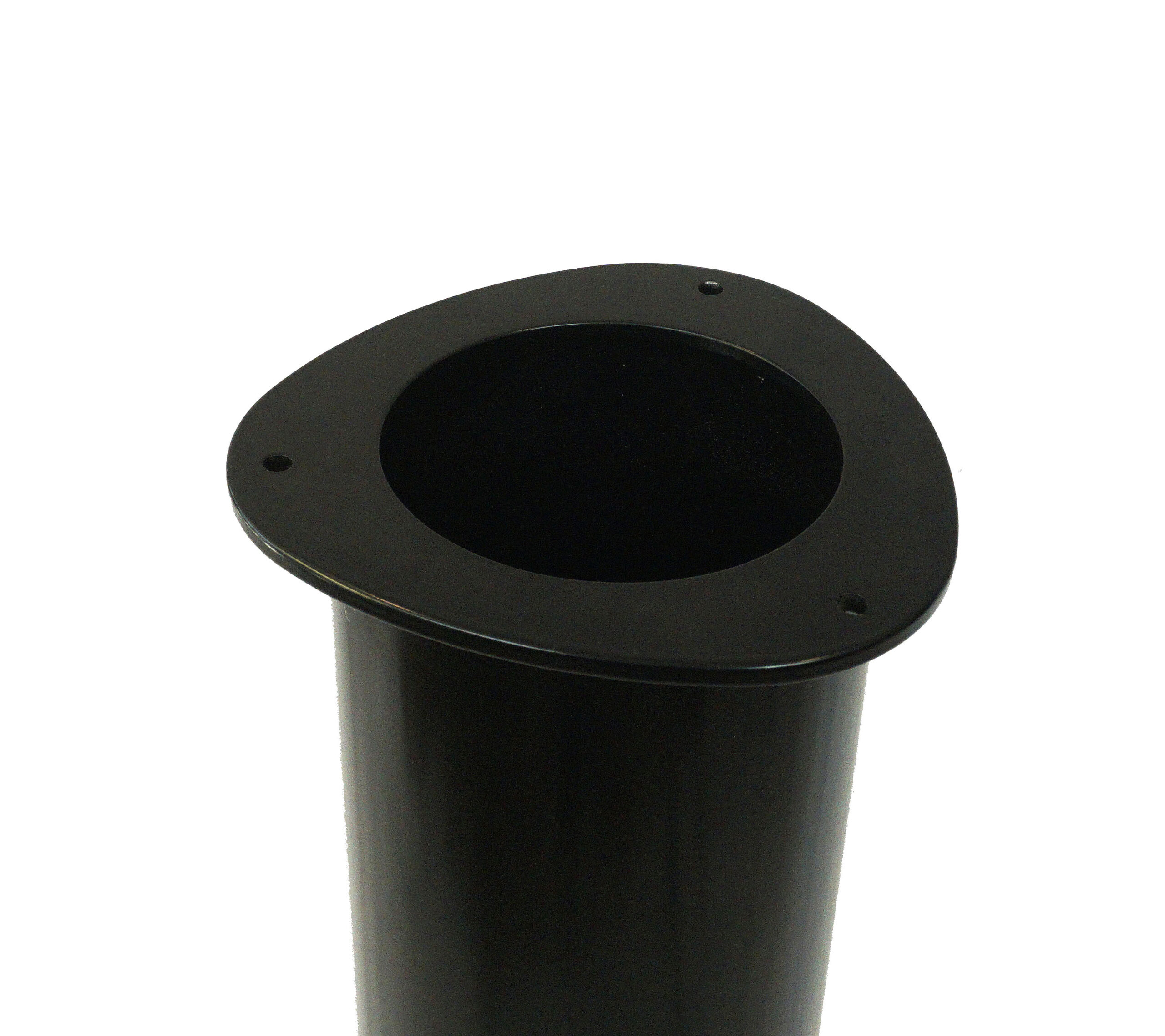
Top Plate with large port. Bolts and hardware on the bottom of the mount plate recess into the port, eliminating the need for a flexible rat cage. The Mount Plate then bolts directly to the pier Top Plate. All leveling is done easily at the base of the pier. This provides the stiffest arrangement.
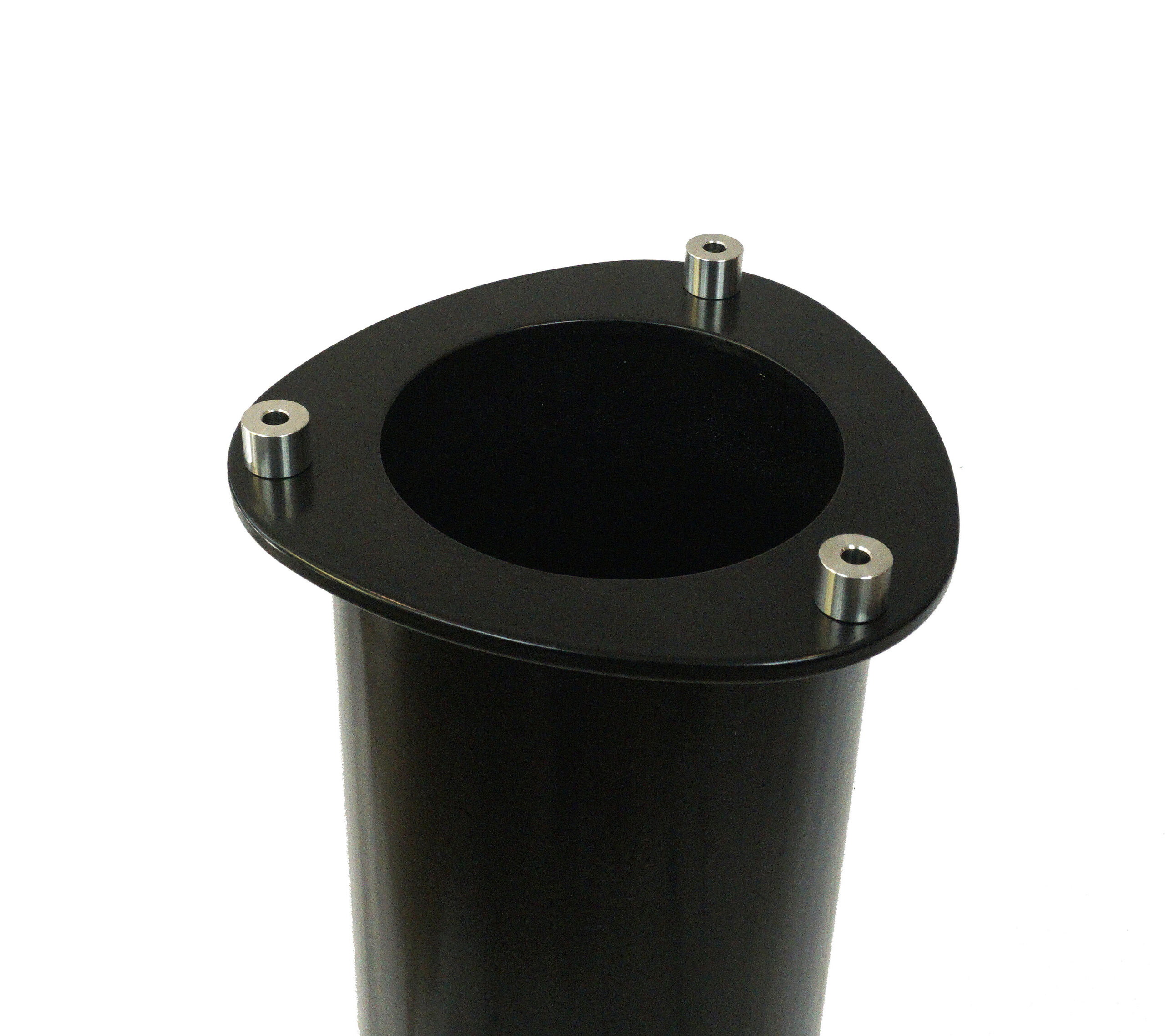
When cabling is internal, 1" wide x 3/4" high stainless steel spacers are used to provide space for cable egress. This space also accommodates bolt clearance for mounts with plate attachment points that do not fall within the Top Plate port. Stainless steel spacers and hardware are included with your MOAP.
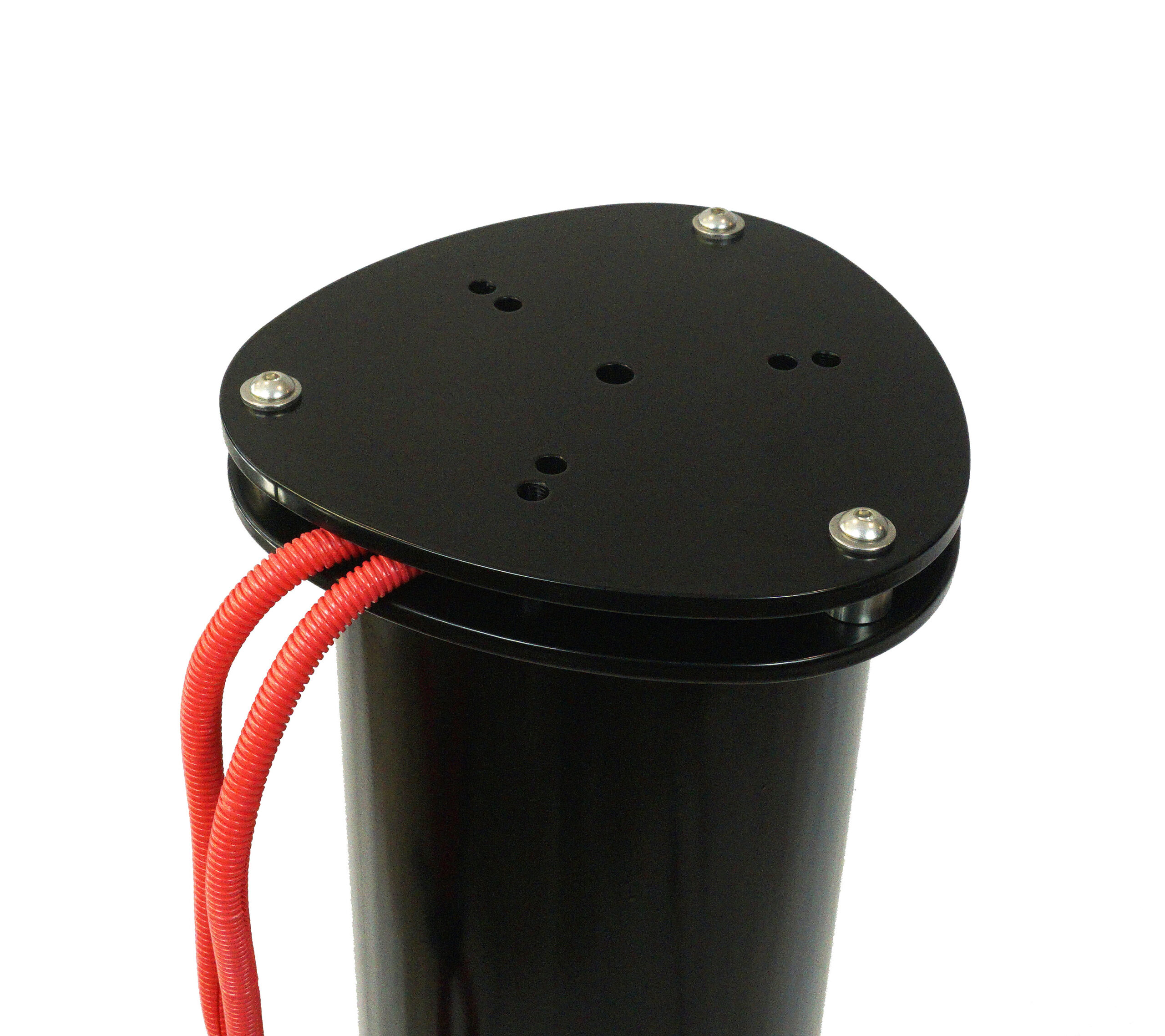
The Mount Plate installed with spacers. The Mount Plate is pre-drilled for your specific mount or adapter.
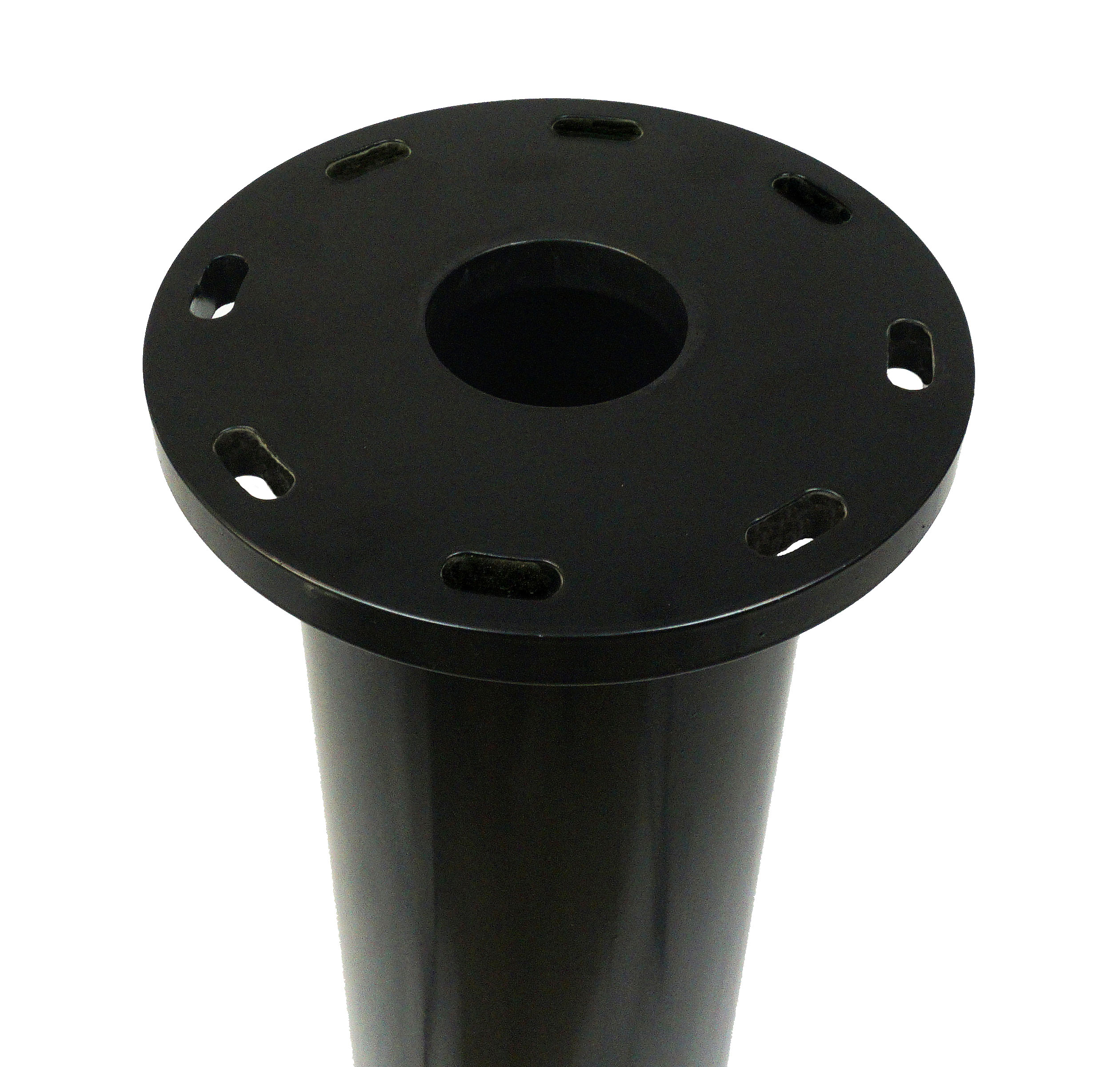
Bottom of Base Plate with port which will accommodate two 1-1/2" conduits plus two 3/4" conduits.
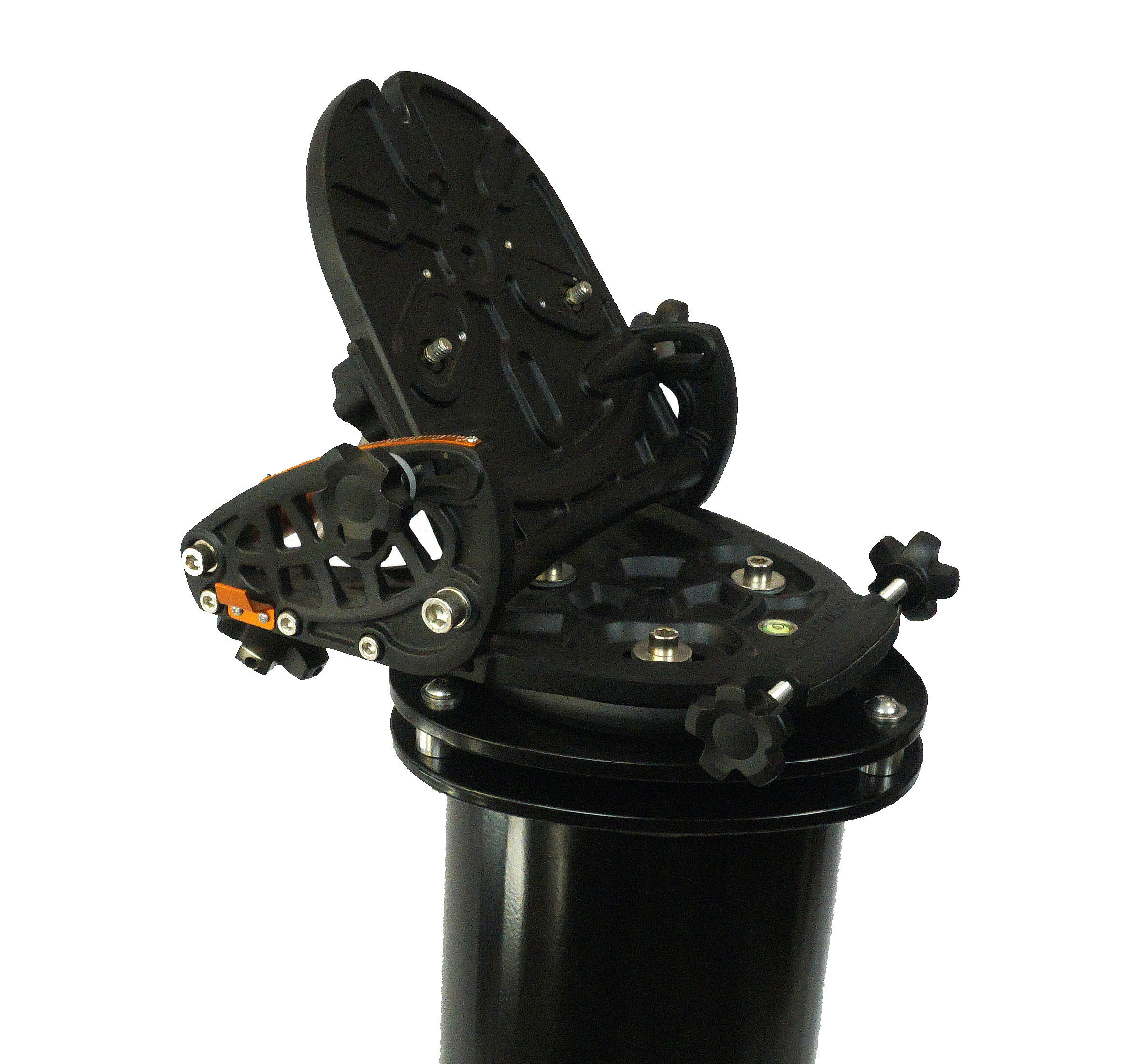
Wedge attached to Mount Plate employing spacers for cable egress or hardware clearance.

Mount Plate attached directly to Pier.
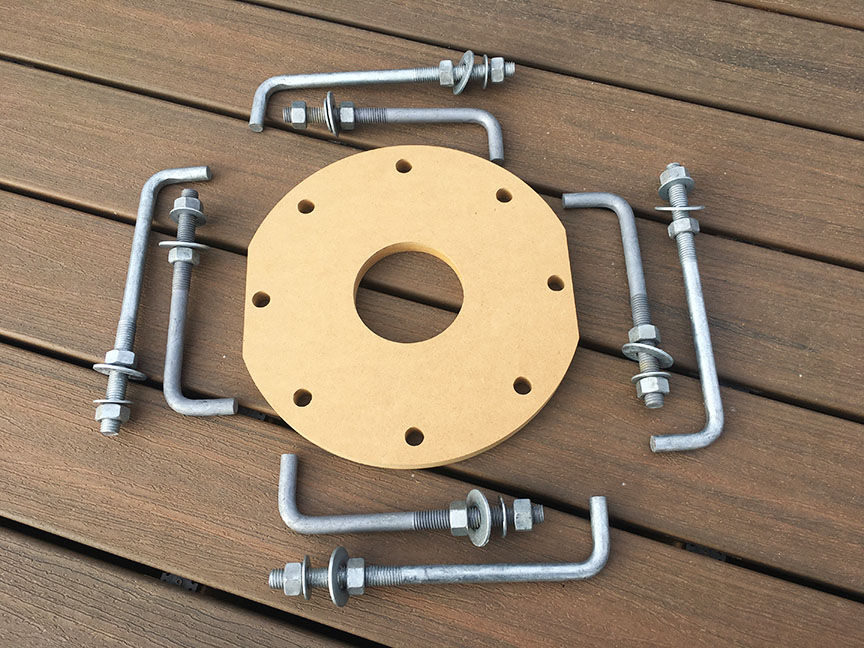
Anchor Kit: CNC template and hot dipped anchor bolts. ASTM A36/A36M & ASTM F1554 Grade 36, A563 grade A, ASTM A153. 36,000 psi yield, 58,000 psi tensile. 14,400# clamp load.
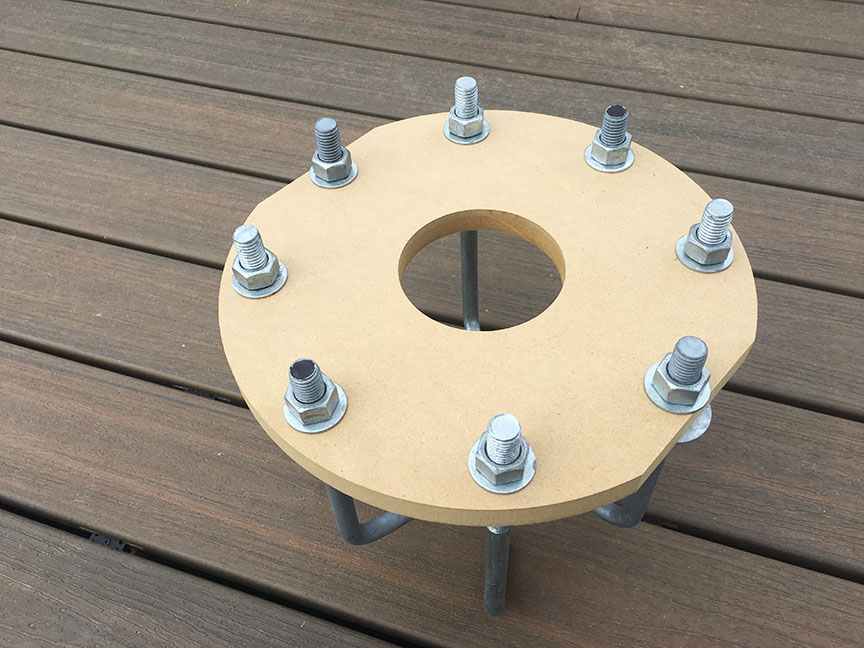
Template top with north-south bolts marked for alignment. The port in the Template matches the port in the MOAP Base Plate for accurate alignment of conduits.
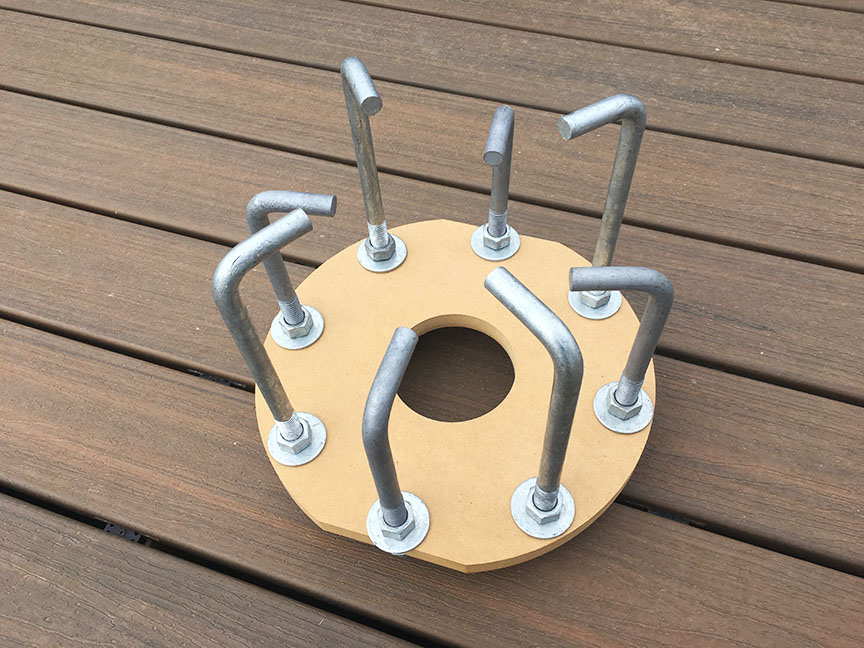
Template bottom with alternating bolts lengths
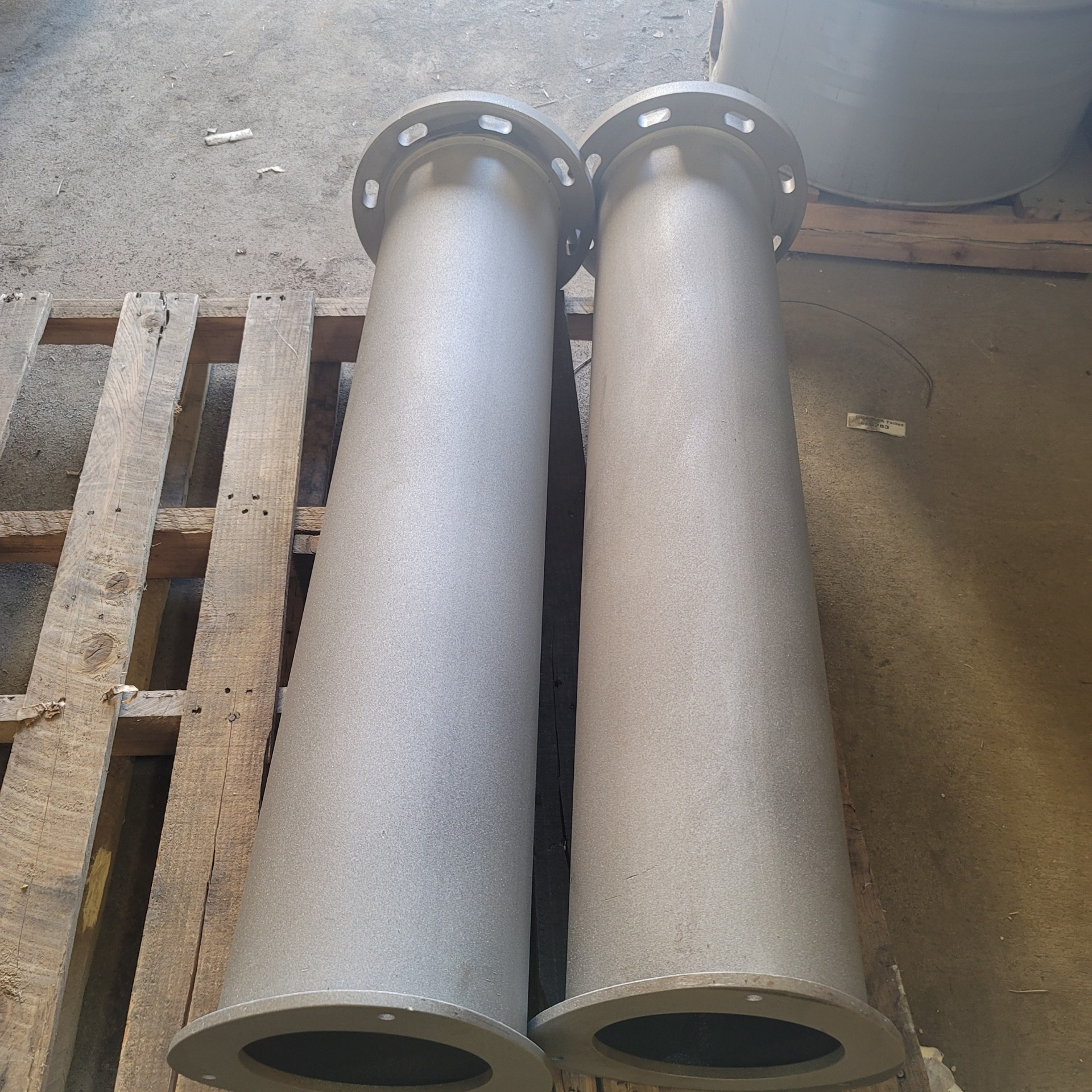
MOAP 43s blasted and ready for powder coating.
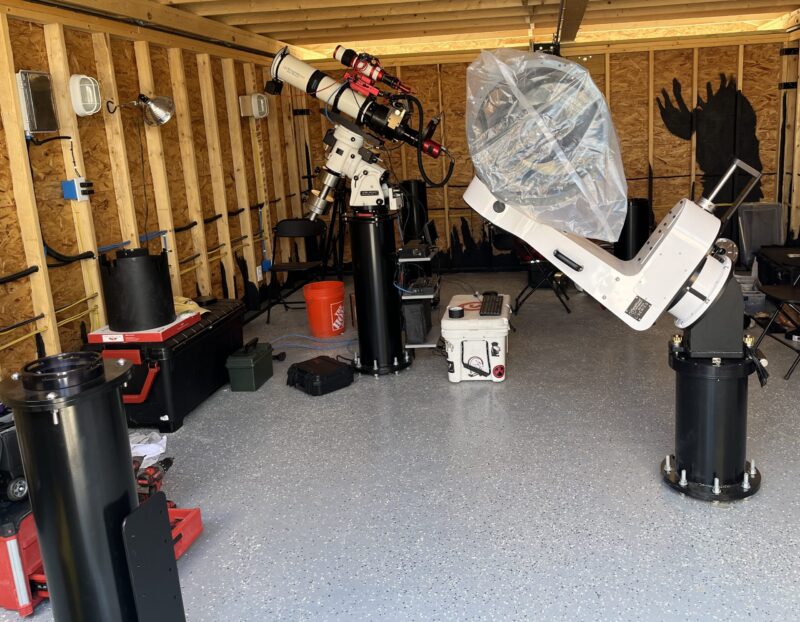
MOAPs at Marathon Sky Park.
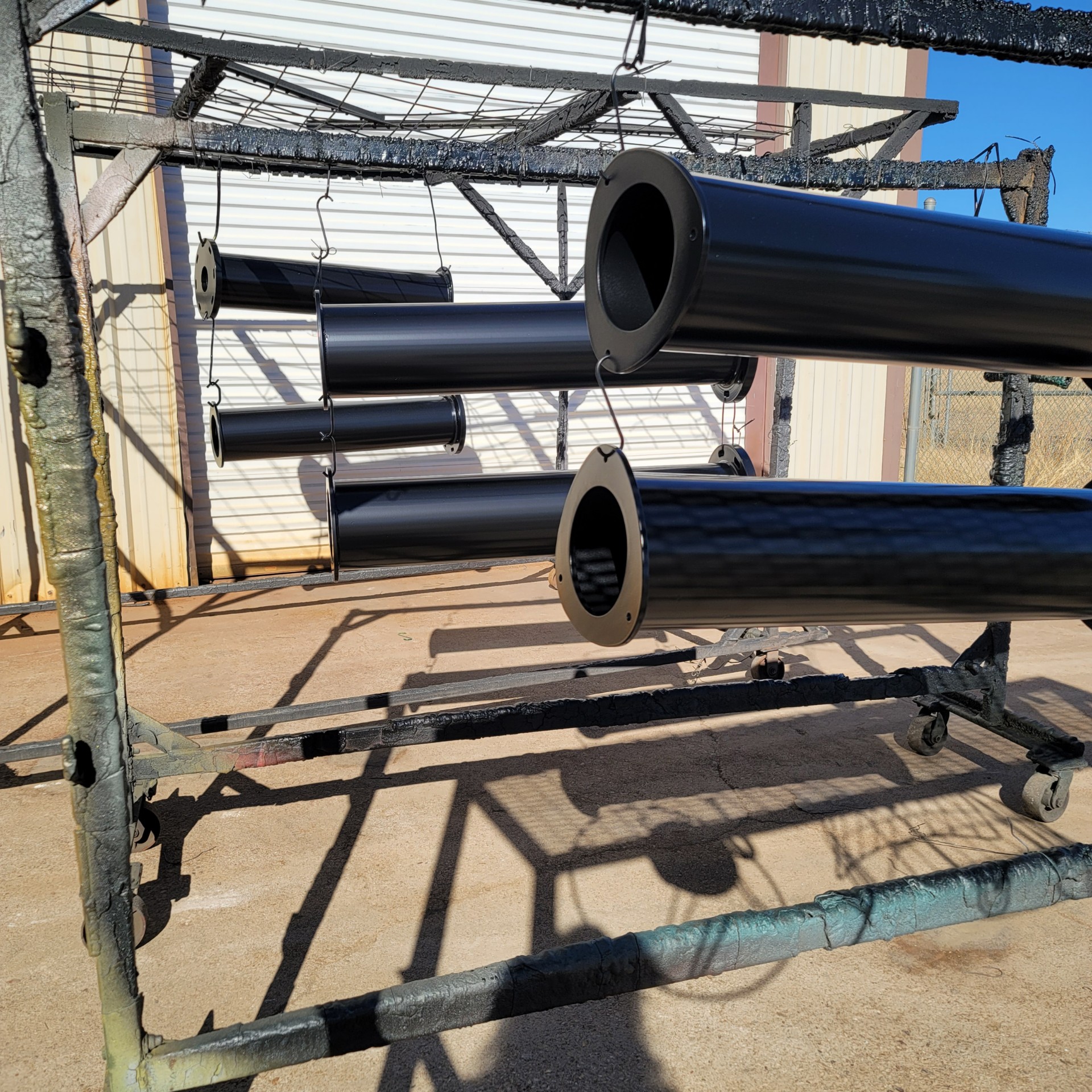
MOAP 43s out of the oven and cooling.
25 Green Bay Cr, Abilene, TX 79602



















